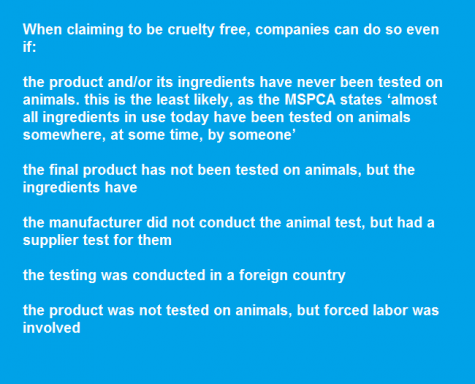Cruelty free makeup: the dark truth behind makeup

Photo by http://stores-goods.com/Illinois/Deer_Park/SEPHORA
The Sephora in Deer Park is a popular location for many LZ students to obtain makeup for personal use. Places like Sephora sell makeup products often made with the use of forced labor.
What does the phrase ‘cruelty free’ mean to you as a consumer? To some, the term is synonymous with a tiny bunny stamped onto the packaging of a product. A bunny on the item automatically means no harmful practice was put into the creation of the product, as many like to think. Take a closer look at the phrase itself. A term such as ‘cruelty free’ suggests a product free of any cruelty — and when you delve deeper into the process behind the manufacturing of these items, you’ll find the truth to be much more complicated.
“Many students at our school wear makeup,” Delaney Katz, senior, said. “And I know even more people that care about animal rights. They’ll go vegan or vegetarian and will be in environmental clubs and think they’re using cruelty free makeup. But not a lot of people know the truth about the subject and how being cruelty free is actually not that easy. I want more people to know that.”
Any company can claim its product cruelty free. As of right now, no legislation exists defining what is and isn’t considered cruelty free. For this reason, many cosmetic companies can choose to promote their products with claims of no cruelty in their labeling and/or advertising. According to the MSPCA, the Massachusetts Society for the Prevention of Cruelty to Animals, when brands complain to be cruelty free, they can do so even if inhumane practices are involved, in this case, forced labor. While brands like cosmetic giant LUSH proudly practiced being ‘cruelty free’, Cruelty in another form, however, was still taking place in the abuse of the vulnerable people making these products. In the battle to fight against animal cruelty, many forget about the cruelty committed against our own kind in the creation of these products.
“A lot of people assume human suffering doesn’t happen in the making of products they purchase on an everyday basis,” Rowan Ellis, a UK Youtube Ambassador, said through a phone interview. “[This] sadly isn’t the case.”

It was Ellis’s video on cruelty-free products that initially got Katz interested in the subject, as it opened her eyes to the idea that not all ‘cruelty free’ makeup is actually cruelty free, she said.
“It sucks because here I was, proudly claiming myself to be an ethical consumer, purchasing cruelty-free makeup after the encouragement of my friends and the internet. And yet here the exact opposite was being proven,” Katz said. “I was appalled at how something as terrible as was simply swept under the rug.”
Look at the makeup on your shelf- almost all of it will contain ‘mica’ as an ingredient. It’s what gives your products ‘the beautiful glimmer’ but something as shimmery and shiny as mica was quickly revealed to have an ugly source. Mica is linked to illegal mines where child labour and debt bondage are widespread, largely in India, according to this Grace&Able article.
“Imagine children as young as your little siblings mining for a mineral used to make that ‘cruelty free’ makeup you put on everyday,” Ellis said. “The Indian government promised to end the abuse of children in it’s mining industry, and yet investigations show illegal mining remains popular. It’s estimated up to 20,000 children work in small-scale mines, digging up mica for 10 hour long days, receiving abysmal to zero pay.”
Big name brands are quick to tout their ‘all natural ingredients’ and vow they’d never test on animals but do not talk about the labour behind the products, because cruelty free doesn’t actually matter to big brands — a cruelty free stamp is the marketing ticket to big sales, which is what business-minded companies are focused on.
“More people aren’t talking about it simply because they don’t know it happens,” Ellis said. “A lot of people assume [slave labor] couldn’t possibly happen in 2017, especially not in big name brands. We have an idea of basic ethics that slavery goes directly against — it’s too horrific to not have been stopped decades ago, [we assume].”
So when brands and companies aren’t telling us the truth, what are we as consumers supposed to do? According to Ellis and Katz, it’s easier to make ethical choices on an individual level when it comes to the environment (like recycling or eating vegan). Fighting human suffering requires a bit more work. Ellis suggests contacting companies and finding the truth they won’t provide.
“It’s about investigating their current ethics and pressuring them to invest in changes,” Ellis said. “This involves more effort (and fewer immediate results) than buying only vegan food and particular brands of lipstick, but I truly hope that won’t put anyone off.”
Simply put, the extra effort is worth it, according to Katz and Ellis. High schoolers are the ones enacting change nowadays and if anyone can hold these companies accountable, it is the youth.
“Just as you put effort into avoiding companies who abuse innocent animals, do the same for innocent people forced into horrible working conditions due to their vulnerable situations. While you’re not the one mining for minerals in grueling conditions for 10 hours a day, they are happening to someone you share fundamental commonalities with-human beings,” Katz said. “It could easily be you or anyone else you love. Contact companies. Demand information. Simply talk about it. Raise awareness.”

The most important thing you need to know about Ria is that Shonali is her real name. This will be her second year on staff as the co-editor of Bear...
